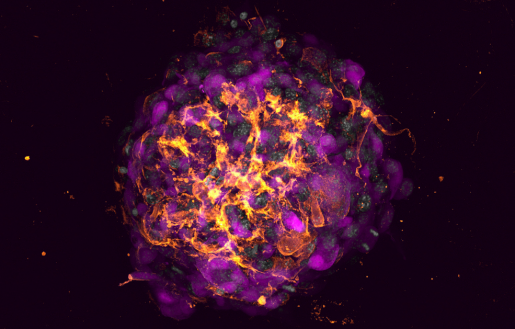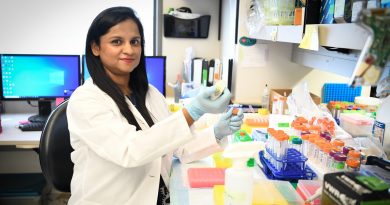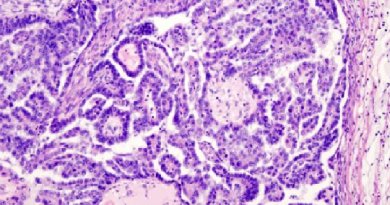Image of the Month: Breast cancer organoid
The Kevin Roarty laboratory at Baylor College of Medicine investigates molecular mechanisms responsible for breast cancer progression. One of their strategies is to work with breast cancer organoids, which are 3D cellular models of breast cancer cells and other components of the tumor microenvironment. Breast organoids can recapitulate the breast microenvironment and have been used to examine the processes and cell communications that lead to tumor growth and progression, as well as factors that may influence them.

The image this month is a human breast cancer organoid in a collagen-based 3D matrix. The cancer cells (magenta) lack the noncanonical Wnt receptor, Ror2. The protein fibronectin (orange) is up-regulated and assembled by Ror2-deficient tumor cells, triggering the invasion, dissemination and survival of cancer cells during metastatic transit. Nuclei are depicted in gray. The image was captured on the Zeiss LSM 880 with Airyscan FAST Confocal Microscope in the Optical Imaging and Vital Microscopy Core at Baylor. Image credit: Kevin Roarty and Hongjiang Si.
The Roarty lab integrates cell, developmental and cancer biology approaches as it seeks to understand:
- how normal developmental signals regulate proper cell fate, morphogenesis and differentiation of the breast, and
- how such signals, often co-opted during cancer progression, direct the invasion and spread of tumor cells to distant organs during breast cancer metastasis.
Dr. Kevin Roarty is an assistant professor of molecular and cellular biology and a member of the Dan L Duncan Comprehensive Cancer Center.




